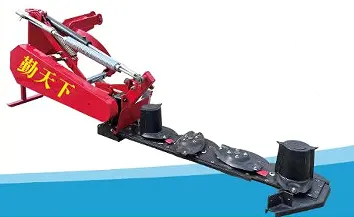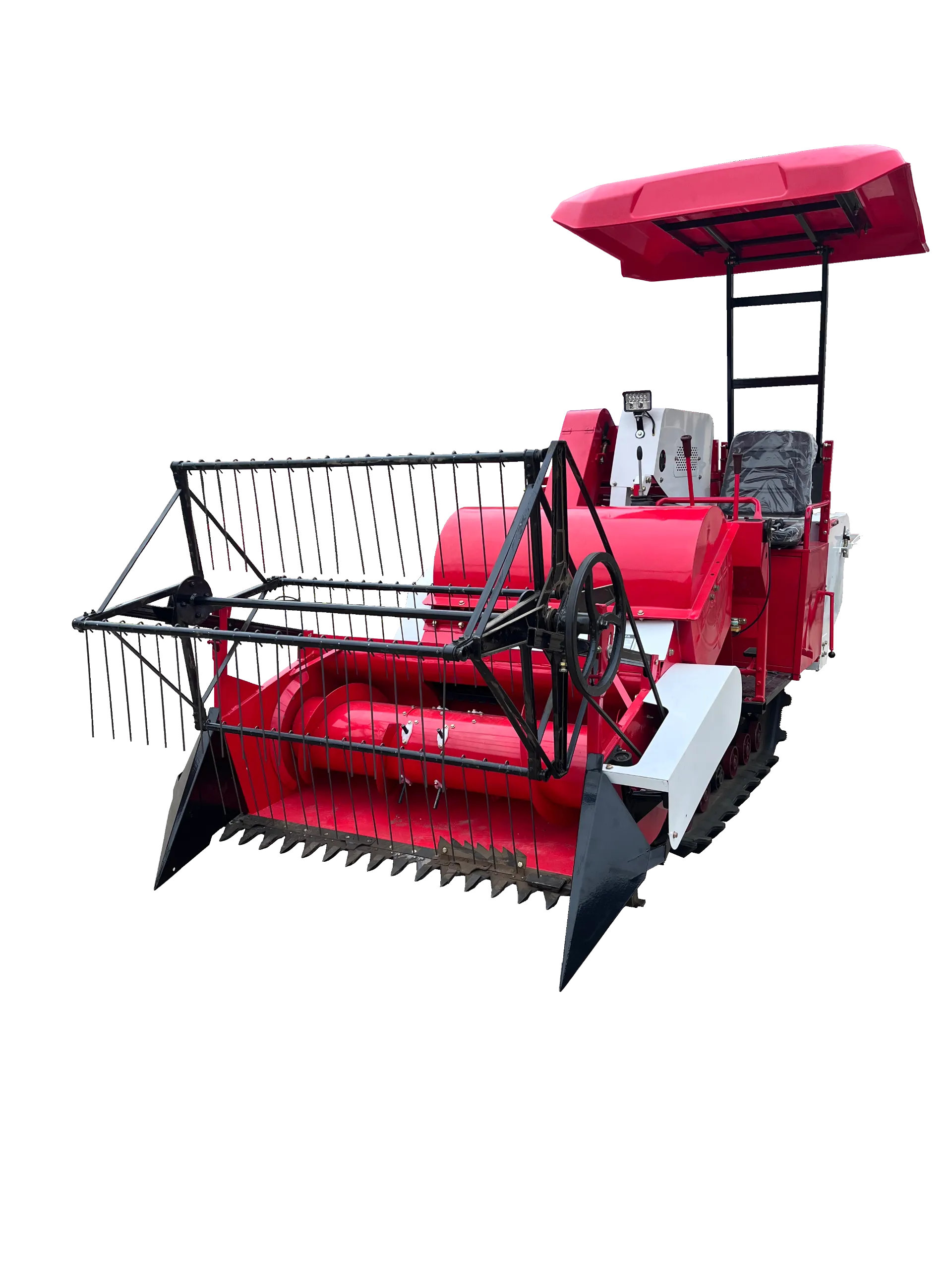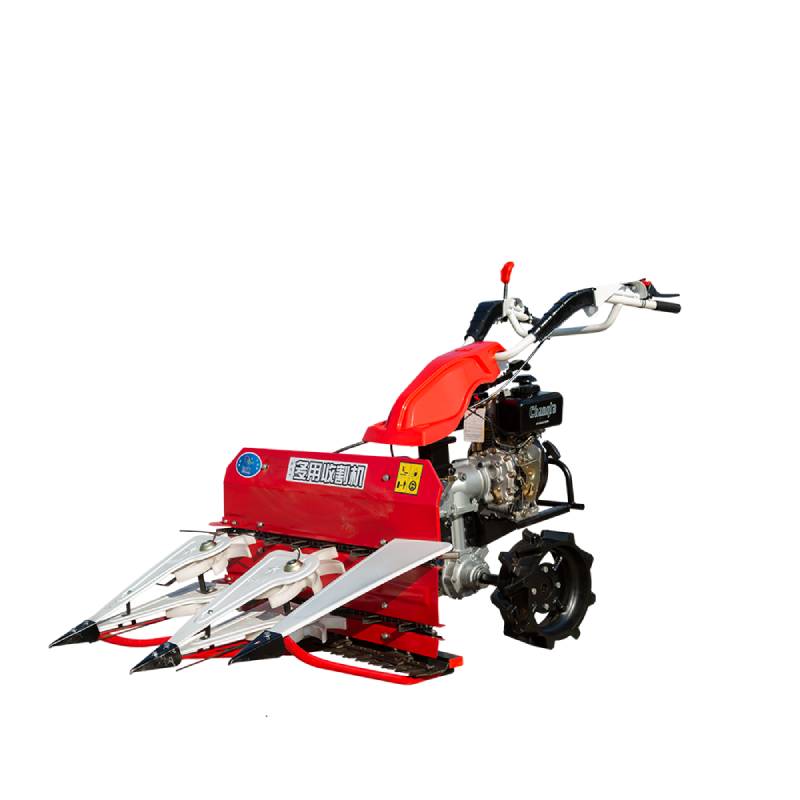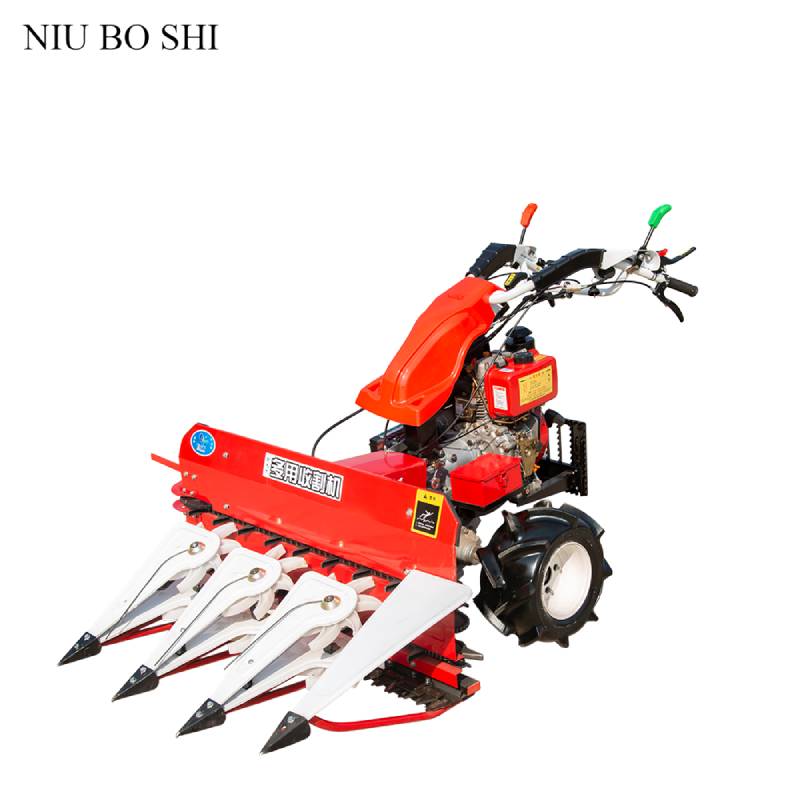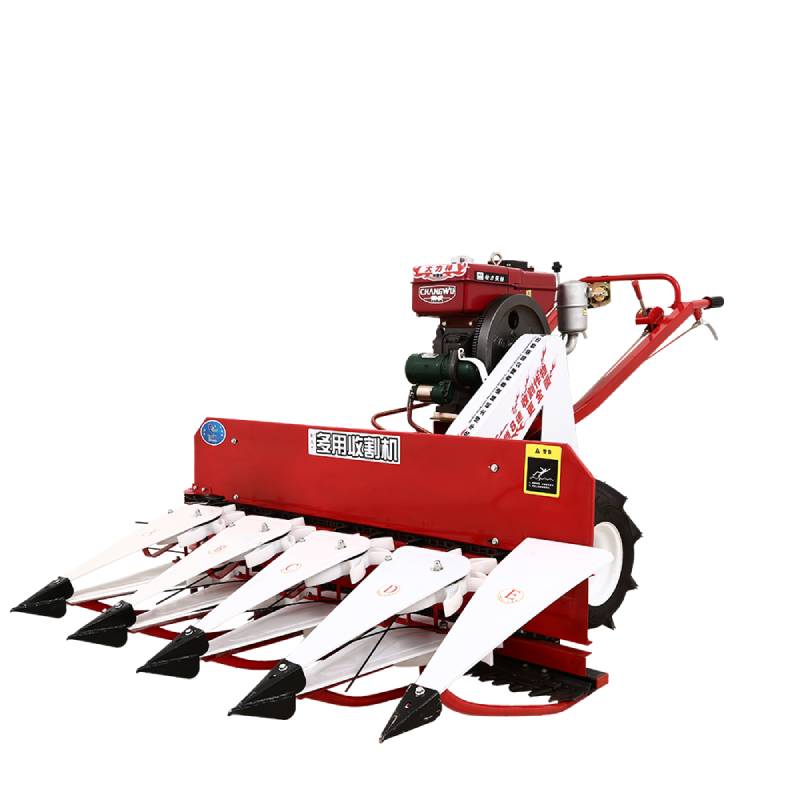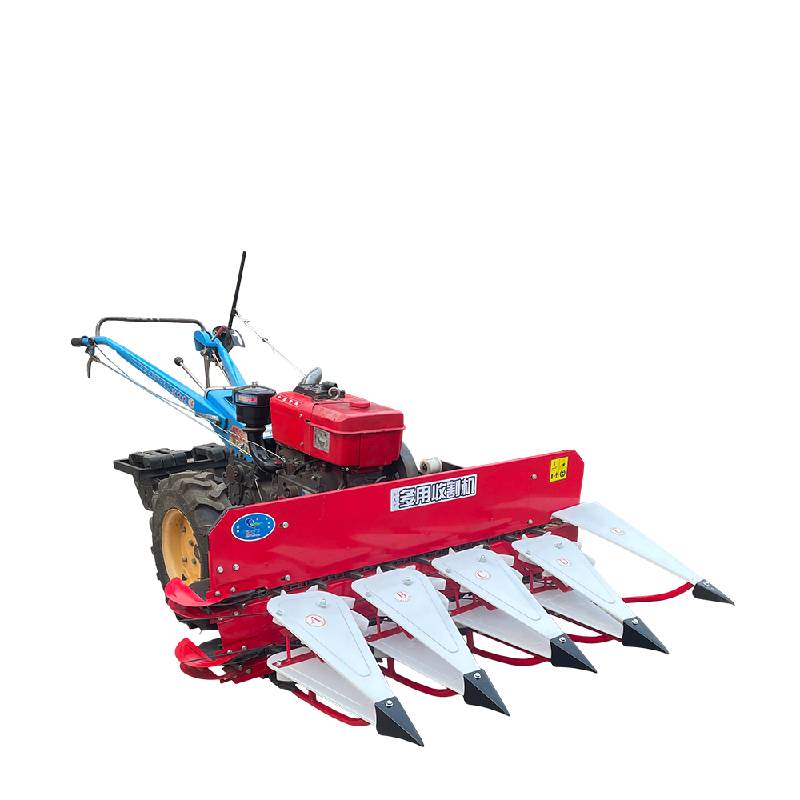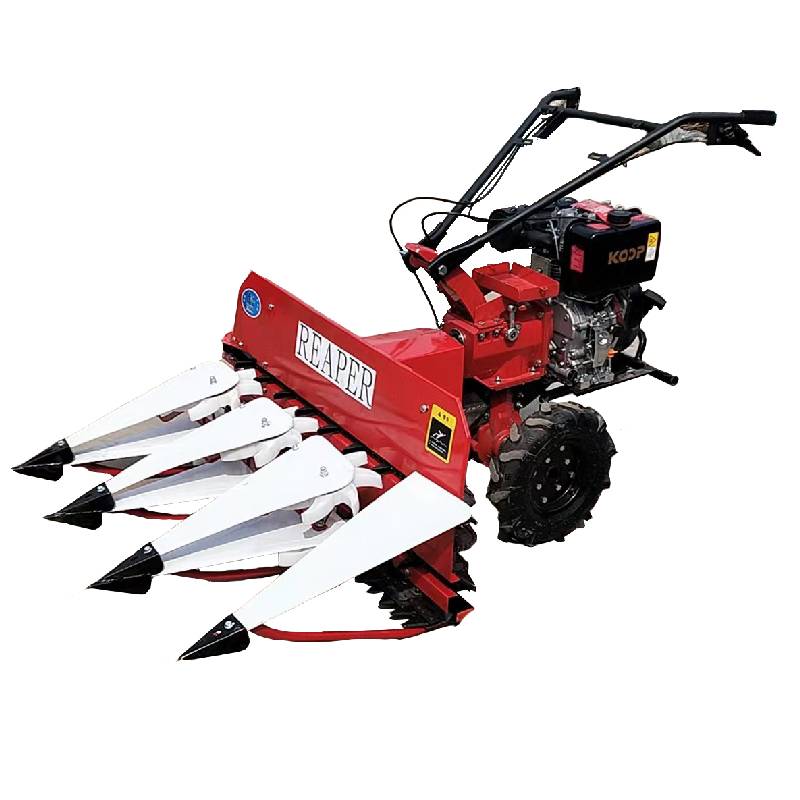Automatic 4-Wheel Reaperbinder: Efficient Agriculture Power Reaper
The Imperative Role of Reaperbinders in Modern Agriculture
In the rapidly evolving landscape of agricultural technology, the reaperbinder stands as a cornerstone of efficient harvesting. This specialized agricultural machinery combines the functions of reaping and binding, streamlining the process of crop collection, particularly for grains like wheat, rice, and oats. By automating the cutting and bundling of crops into manageable sheaves, the reaperbinder significantly reduces manual labor, accelerates harvest times, and minimizes post-harvest losses. For B2B stakeholders in the agricultural sector, understanding the intricate design, robust manufacturing, and versatile applications of these machines is crucial for optimizing operational efficiency and ensuring food security.
The demand for advanced agricultural solutions is driven by a global population increase, climate change challenges, and the need for sustainable farming practices. Innovations in machinery, such as the `Mini tiller mounted reaper head` from leading manufacturers, exemplify the industry's pivot towards more compact, adaptable, and technologically integrated tools. This article delves into the comprehensive aspects of reaperbinder technology, from its meticulous manufacturing process to its strategic deployment in diverse agricultural settings.
Manufacturing Excellence: The Process Flow of a Reaperbinder
The production of a high-performance reaperbinder, such as the Mini tiller mounted reaper head, involves a sophisticated multi-stage process, meticulously designed to ensure durability, efficiency, and reliability in demanding agricultural environments. This process adheres to stringent international quality standards, including ISO 9001 for quality management and ANSI standards for component integrity.
- Material Sourcing and Selection: The foundation of a robust reaperbinder lies in its materials. High-grade carbon steel, alloy steels, and specialized polymers are selected for their strength, wear resistance, and corrosion resistance. Components exposed to high stress or abrasion, like cutting blades and knotter parts, often utilize hardened alloys (e.g., 65Mn spring steel for blades) to ensure a long service life, typically exceeding 5,000 operational hours under normal conditions.
- Component Fabrication:
- Casting: Complex structural parts, such as gearbox housings and certain chassis elements, are precision-cast using ductile iron or steel alloys to achieve specific geometries and high strength-to-weight ratios.
- Forging: Critical load-bearing components like axles, connecting rods, and specialized gears undergo hot forging to enhance their grain structure, resulting in superior tensile strength and fatigue resistance.
- CNC Machining: High-precision components, including shafts, bearings seats, and intricate knotter mechanisms, are fabricated using advanced CNC (Computer Numerical Control) machining centers. This ensures exact tolerances, critical for smooth operation and minimizing wear. Surface finishes are often ground or polished to reduce friction.
- Sheet Metal Fabrication: Protective covers, shields, and certain frame elements are manufactured using laser cutting, bending, and welding techniques, ensuring structural integrity and protection from environmental elements.
- Assembly and Integration: Individual components are meticulously assembled into sub-assemblies (e.g., cutting mechanism, binding unit, power transmission) before being integrated into the final machine. Robotics and automated assembly lines are increasingly used for consistency and speed, complemented by skilled technicians for fine-tuning and critical connections.
- Quality Assurance and Testing: Each reaperbinder undergoes rigorous multi-stage testing.
- Component-Level Testing: Material hardness, tensile strength, and dimensional accuracy are verified against design specifications. Non-destructive testing (NDT) methods like ultrasonic inspection are used for critical forged and cast parts.
- Sub-Assembly Testing: Gearbox efficiency, knotter reliability, and blade sharpness are tested independently before final assembly.
- Final Product Performance Testing: Every machine undergoes dynamic field simulations or actual field tests, verifying operational efficiency, fuel consumption, binding consistency, and safety features. Adherence to ISO 11684 (Tractor and Machinery Safety) is paramount.
- Surface Treatment and Finishing: Components receive protective coatings such as powder coating, galvanization, or specialized paints to enhance corrosion resistance, crucial for machinery operating in varied weather conditions and resisting harsh agricultural chemicals. This significantly extends the service life, especially in target industries like agriculture where exposure to moisture and soil is constant.
These rigorous processes ensure that the reaperbinder offers significant advantages in typical application scenarios, including enhanced energy saving through optimized engine-to-blade power transmission, and superior corrosion resistance, directly translating to reduced maintenance costs and extended operational longevity for the end-user.
Key Industry Trends in Agricultural Mechanization
The agricultural machinery market is experiencing significant transformation, driven by technological advancements, environmental concerns, and demographic shifts. These trends directly influence the design, functionality, and adoption of machinery like the reaperbinder.
- Precision Agriculture and Automation: The integration of GPS, IoT sensors, and data analytics is enabling precision farming. Modern reaperbinders are being designed to collect operational data, optimize cutting height, and adjust binding tension automatically, enhancing efficiency and reducing waste. This trend also sees the rise of autonomous or semi-autonomous `agriculture power reaper` units.
- Miniaturization and Adaptability: There's a growing demand for compact, versatile machinery suitable for smaller landholdings, diverse terrains, and specialty crops. The Mini tiller mounted reaper head is a prime example of this trend, offering excellent maneuverability where larger `4 wheel reaper binder` units might be impractical.
- Sustainability and Efficiency: Focus on fuel efficiency, reduced emissions, and minimal soil compaction is paramount. Manufacturers are incorporating more efficient engines and lighter, yet robust, materials. The capacity for these machines to also operate as a `windrower` (laying crops in rows without binding) highlights their multipurpose design, enhancing resource utilization.
- Smart Farming Integration: Beyond just automation, the next generation of `agriculture reaper machine` is expected to integrate seamlessly with broader farm management systems, providing real-time data on harvest progress, yield mapping, and maintenance diagnostics.
Technical Specifications of the Mini Tiller Mounted Reaper Head
The `Mini tiller mounted reaper head` is engineered to provide an optimal balance of power, precision, and maneuverability. Designed as an attachment, it transforms a standard mini tiller into an efficient harvesting unit, making it ideal for small to medium-sized farms and challenging terrains where larger machinery is unsuitable.
| Parameter | Specification | Implication / Advantage |
|---|---|---|
| Working Width | 100-120 cm (Adjustable) | Efficient coverage for various crop rows, reducing passes and fuel consumption. |
| Productivity | 0.15-0.25 hectares/hour | Significantly higher than manual harvesting, optimizing labor costs. |
| Minimum Cutting Height | ≥5 cm (Adjustable) | Minimizes crop stubble, ensuring maximum yield recovery and suitability for different crop types. |
| Binding Type | Twine (Jute/PP) | Reliable and cost-effective bundling, compatible with readily available materials. |
| Weight (Reaper Head) | Approx. 70-85 kg | Lightweight design for easy maneuverability and minimal soil compaction. |
| Power Requirement | 5-12 HP Mini Tiller | Broad compatibility with existing mini tiller models, reducing entry barriers for farmers. |
| Blade Material | 65Mn Spring Steel, heat-treated | Exceptional sharpness retention and wear resistance for prolonged field operations. |
| Dimensions (L×W×H) | Approx. 150×130×90 cm | Compact footprint for easy storage and transportation. |
These specifications underscore the Mini tiller mounted reaper head's capacity to deliver superior performance in terms of cutting efficiency, binding reliability, and operational ease. The robust construction ensures a long service life, even under demanding field conditions, contributing to a lower total cost of ownership for the farmer.
Application Scenarios: Versatility in Harvest
The versatility of the reaperbinder extends across various agricultural environments and crop types, making it an indispensable tool for enhancing harvesting efficiency. Its design allows it to excel in specific niches where larger, more cumbersome machines fall short.
- Small and Medium-Sized Farms: For agricultural operations that do not necessitate large-scale, self-propelled combine harvesters, the `agriculture reaper machine` offers an economically viable and highly efficient alternative. Its lower initial investment and operational costs make it attractive for farmers seeking to mechanize without extensive capital outlay.
- Diverse Crop Types: While primarily designed for grains such as wheat, rice, barley, and oats, modern reaperbinders are also adept at harvesting other stalk-based crops like certain types of fodder and even specialty herbs. The adjustable cutting height and efficient binding mechanism ensure clean cuts and secure bundles, regardless of crop variation.
- Hilly and Uneven Terrains: The compact nature of the Mini tiller mounted reaper head, combined with the inherent maneuverability of a mini tiller, makes it exceptionally well-suited for terraced fields, sloped landscapes, and irregularly shaped plots. This contrasts with larger `4 wheel reaper binder` units that may struggle with stability and turning radius in such conditions.
- Seed Production Farms: In seed production, gentle handling of crops is crucial to maintain seed viability. The precise cutting and careful bundling minimize damage to the seed heads, preserving quality.
- Post-Harvest Logistics: The binding feature of the reaperbinder directly facilitates easier handling, transportation, and storage of harvested crops. Bundled sheaves are far simpler to manage than loose material, reducing labor requirements during the post-harvest phase and minimizing spoilage.
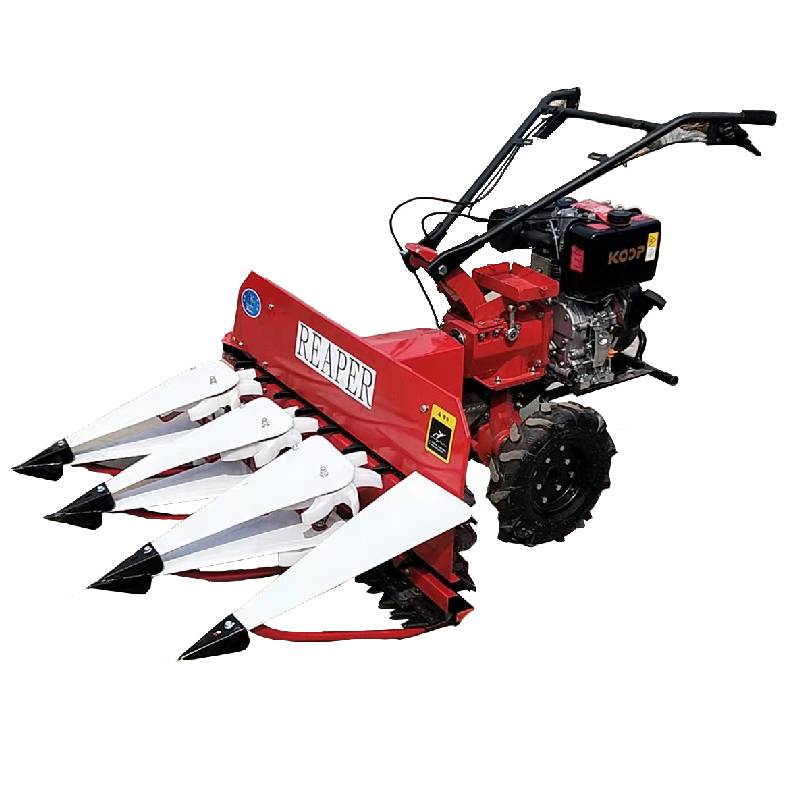
Technical Advantages and Performance Benchmarks
The technical superiority of a well-engineered reaperbinder offers tangible benefits for agricultural operations, translating into improved yield, reduced costs, and enhanced sustainability.
- Unmatched Efficiency and Productivity: Compared to manual harvesting, the Mini tiller mounted reaper head can increase harvesting speed by 5-10 times, depending on crop density and field conditions. This drastic reduction in time is critical during peak harvest seasons when weather windows are narrow. For example, a single unit can harvest 1.5-2.5 acres per day, far surpassing the capabilities of multiple laborers.
- Optimized Crop Recovery: Precision cutting mechanisms minimize crop loss during harvesting. Blades designed for clean, sharp cuts prevent shattering of grain heads, which can account for significant losses in traditional methods. Data from field trials consistently show less than 1% crop loss during the reaping process with high-quality machines.
- Durability and Longevity: The use of advanced materials (e.g., hardened steel, corrosion-resistant coatings) and precision manufacturing processes significantly extends the operational lifespan of the reaperbinder. Components like the knotter, which is often a point of wear, are engineered for high reliability, capable of performing hundreds of thousands of binding cycles without failure, leading to typical service lives of 7-10 years with proper maintenance.
- Fuel Economy and Reduced Operational Costs: Modern reaperbinders are designed for optimal power transfer and minimal friction, leading to significant fuel efficiency. For example, a Mini tiller mounted reaper head can operate on as little as 0.5-1.0 liters of fuel per hour, making it an economically attractive option compared to larger, more fuel-intensive machinery. This also contributes to a reduced carbon footprint.
- Ease of Operation and Maintenance: Ergonomic designs and intuitive controls ensure that operators can quickly learn and efficiently use the machine. Simplified maintenance routines, with easily accessible lubrication points and modular component replacement, minimize downtime.
Comparative Analysis: Reaperbinder Technologies
The market offers various types of reaperbinders, each suited for different farm sizes, terrains, and operational preferences. A comparative analysis helps B2B buyers make informed decisions based on their specific needs.
| Feature | Mini Tiller Mounted Reaper Head | Self-Propelled Reaperbinder (`Automatic Reaper Machine`) | Tractor-Mounted Reaperbinder (`4 Wheel Reaper Binder`) |
|---|---|---|---|
| Farm Size Suitability | Small to Medium (0.5-5 hectares) | Medium to Large (2-20+ hectares) | Medium to Large (5-50+ hectares) |
| Maneuverability | Excellent (tight turns, hilly terrain) | Good (dedicated steering, but larger footprint) | Moderate (depends on tractor size, less agile) |
| Initial Investment | Low (attachment for existing tiller) | High (complete standalone unit) | Medium (attachment, but requires a tractor) |
| Productivity Rate | 0.15-0.25 ha/hr | 0.3-0.8 ha/hr | 0.5-1.5 ha/hr (higher with larger cutting widths) |
| Fuel Efficiency | Very Good (low power requirements) | Good (optimized engine) | Moderate (depends on tractor engine) |
| Complexity/Maintenance | Low (fewer moving parts, simple design) | Moderate to High (integrated engine, hydraulics) | Moderate (power take-off, more parts) |
This comparison highlights the strategic positioning of the Mini tiller mounted reaper head as a cost-effective, highly maneuverable solution for specific agricultural needs, particularly for farmers transitioning from manual labor to mechanization, or those with challenging field conditions. While `automatic reaper machine` and `4 wheel reaper binder` units offer higher throughput for vast plains, the mini tiller attachment provides unparalleled accessibility and efficiency in its target segment.
Customized Solutions for Specific Agricultural Needs
Recognizing the diverse nature of global agriculture, leading manufacturers offer customized solutions for their reaperbinders. These adaptations ensure optimal performance in varying environmental conditions, crop types, and operational requirements.
- Adaptability to Local Conditions: Customization often includes specialized wheel types for muddy or sandy terrains, engine modifications for high altitudes or extreme temperatures, and specific anti-corrosion treatments for coastal regions. For instance, in areas with high humidity, components might receive enhanced rust-proofing.
- Crop-Specific Attachments: While the standard reaperbinder is versatile, specific crop variants might benefit from tailored cutting bars or binding mechanisms. This can include different blade types for thicker stalks or specialized knotters for delicate crops to minimize seed loss or damage.
- Power Source Integration: For the Mini tiller mounted reaper head, customization can involve adapter kits for a wider range of mini tiller brands and models, ensuring seamless mechanical and power take-off (PTO) integration.
- Smart Technology Upgrades: As part of precision agriculture, customized solutions might include the integration of basic yield monitoring sensors or GPS guidance systems, even for smaller units, providing valuable data to farmers.
These tailored options underscore the commitment to providing solutions that are not just effective but also perfectly aligned with the unique demands of each agricultural operation, ensuring maximum return on investment for the farmer.
Application Case Studies and Customer Successes
Real-world application demonstrates the transformative impact of the reaperbinder. These case studies highlight the tangible benefits experienced by farmers and agricultural enterprises.
Case Study 1: Enhanced Wheat Harvesting in Northern India
A cooperative of small-scale farmers in Punjab, India, traditionally relied on manual labor for their wheat harvest. Facing increasing labor costs and a shrinking workforce, they adopted a fleet of Mini tiller mounted reaper heads. Over two harvest seasons, the cooperative reported a 300% increase in daily harvest capacity per farmer, reducing the average harvest time for a 2-hectare plot from 5 days to just 1.5 days. Furthermore, the precise cutting and binding mechanism led to an estimated 5-7% reduction in crop loss compared to manual methods, directly impacting their overall yield and profitability.
Case Study 2: Rice Paddy Efficiency in Southeast Asia
In Vietnam, a prominent rice farming enterprise sought to improve efficiency in its medium-sized paddies. They integrated several `agriculture power reaper` units. The robust design and excellent maneuverability in wet conditions proved invaluable. The enterprise observed a 20% reduction in post-harvest drying time due to uniform bundling and minimized contact with soil, alongside a 15% decrease in overall harvesting operational costs within the first year. The enhanced binding quality also made subsequent threshing processes more efficient, demonstrating the ripple effect of improved mechanization.
Ensuring Trust: Certifications, Warranty, and Support
Building and maintaining trust with B2B clients is paramount. This is achieved through verifiable certifications, transparent warranty policies, and robust customer support infrastructure.
- Quality Certifications: Manufacturers adhere to international quality and safety standards. Products like the Mini tiller mounted reaper head are typically certified under ISO 9001 (Quality Management Systems), ensuring consistent product quality and process efficiency. Compliance with regional agricultural machinery safety standards (e.g., CE, EAC) further guarantees product integrity and user safety.
- Warranty Commitments: A standard warranty of 12-24 months is usually provided, covering manufacturing defects and critical component failures. Extended warranty options are often available, offering peace of mind and long-term investment protection for agricultural enterprises. Detailed terms and conditions are readily available.
- Lead Time and Fulfillment: Efficient supply chain management ensures competitive lead times. For standard models, typical lead times range from 3-6 weeks, while customized solutions may require 8-12 weeks, depending on complexity. Manufacturers often maintain strategic inventories of popular models and spare parts to facilitate prompt fulfillment and minimize operational delays for customers.
- Comprehensive Customer Support: Post-sales support is critical for agricultural machinery. This includes technical assistance (via phone, email, or dedicated online portals), access to a global network of authorized service centers, and comprehensive spare parts availability for at least 10 years after product discontinuation. Training programs for operators and maintenance staff are also frequently offered.
Frequently Asked Questions (FAQ)
- Q: What crops can a Mini tiller mounted reaper head effectively harvest?
- A: It is highly effective for harvesting most stalk-based crops, including wheat, rice, barley, oats, and various types of fodder. Its adjustable cutting height allows for versatility across different crop characteristics.
- Q: How does the `agriculture reaper machine` handle varying terrain conditions?
- A: The Mini tiller mounted reaper head is particularly designed for maneuverability on uneven, hilly, or terraced fields due to its compact size and the agility of the mini tiller it attaches to. Special tire options can further enhance traction in challenging conditions.
- Q: What is the typical lifespan of the cutting blades and knotter mechanism?
- A: With proper maintenance and use, cutting blades (made from hardened steel) typically last for 150-250 working hours before sharpening or replacement. The knotter mechanism, a critical component, is engineered for a service life exceeding 5,000 operational hours before significant overhaul might be needed.
- Q: Is training required for operators?
- A: While relatively easy to operate, basic training is recommended to maximize efficiency, ensure safety, and perform routine maintenance. Many manufacturers offer training resources or programs for new customers.
- Q: What are the main benefits of using a `windrower` function or separate `windrower`?
- A: A windrower (or a reaperbinder capable of windrowing) cuts and lays crops in neat rows for drying before binding or baling. This process is beneficial for even drying, reducing moisture content, and preparing crops for subsequent processing stages, especially in humid climates or for crops like fodder.
Conclusion
The reaperbinder, particularly in its adaptable forms like the Mini tiller mounted reaper head, represents a critical advancement in agricultural mechanization. Its ability to provide efficient, reliable, and cost-effective harvesting solutions addresses key challenges faced by farmers globally, from labor shortages to the need for increased productivity and reduced post-harvest losses. Through meticulous manufacturing, adherence to international standards, and continuous innovation guided by industry trends, these machines offer not just equipment, but a pathway to more sustainable and profitable farming operations. For B2B partners, investing in high-quality reaperbinder technology is a strategic move towards empowering agricultural clients and contributing to global food security.
References
- FAO. The State of Food and Agriculture 2023: Agrifood systems transformation for a better future. Rome, FAO.
- Journal of Agricultural Engineering and Technology. (Various issues on crop harvesting mechanization).
- ASABE Standards (American Society of Agricultural and Biological Engineers).
- ISO 9001:2015 Quality management systems — Requirements.
- Purdue University Extension. Agricultural Mechanization and its Impact on Farm Productivity.
Latest news
-
Cane Harvester that Versatile Agricultural Harvesting Solutions from Hebei NiuboshiNewsAug.22,2025
-
Wheat Harvester that Advanced Crop Harvesting Solutions from Hebei NiuboshiNewsAug.22,2025
-
Combine Harvester Small that Revolutionizing Agriculture with Compact Harvesting SolutionsNewsAug.22,2025
-
Forage Harvester that Efficient Machinery for Animal Feed ProductionNewsAug.22,2025
-
Rice Reaper Machine that Comprehensive Harvesting Solutions for Global AgricultureNewsAug.22,2025
-
When to Upgrade Your Old Forage HarvesterNewsJun.05,2025

